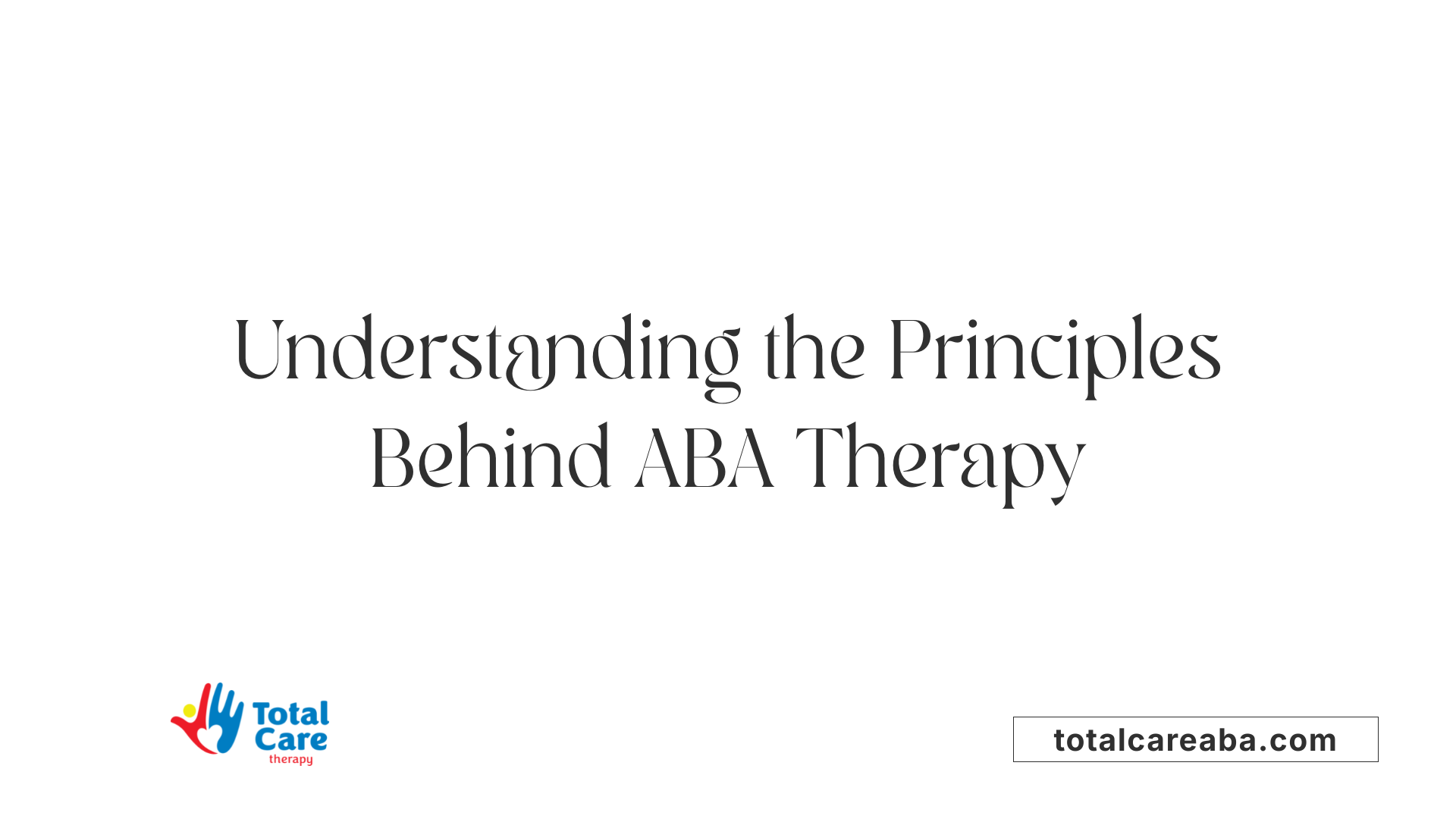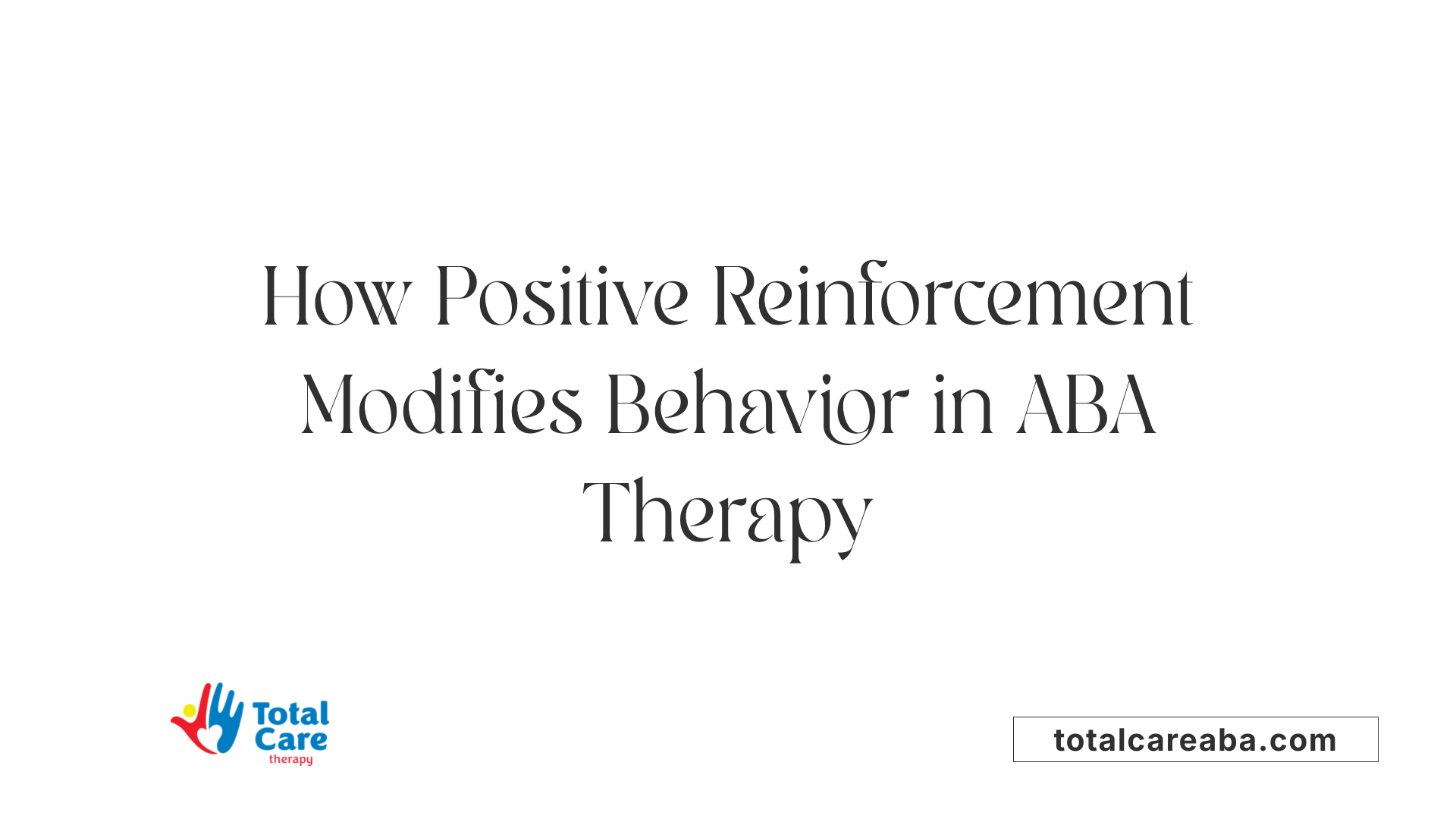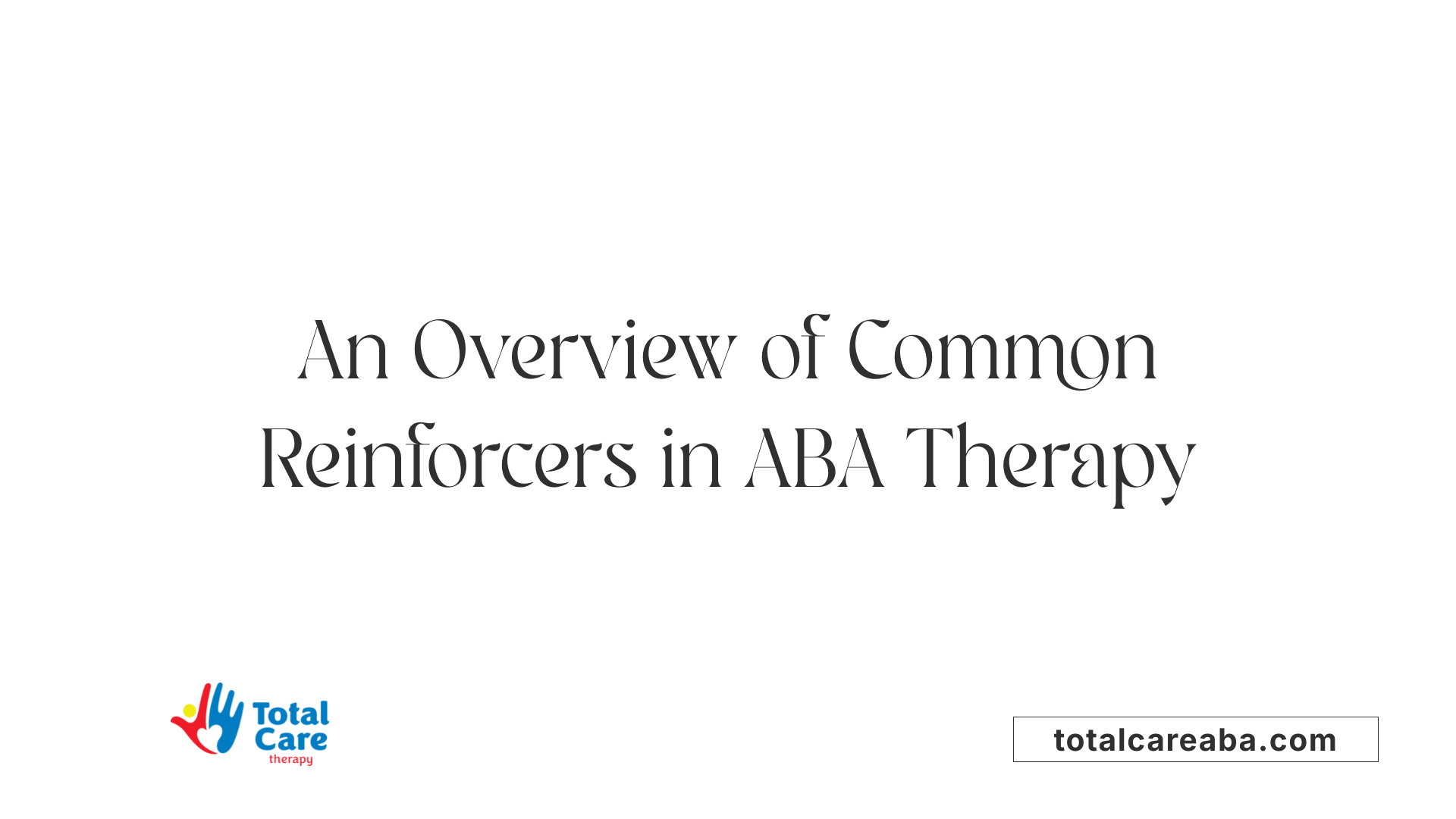How ABA Therapy Uses Positive Reinforcement to Encourage Desired Behaviors
Unpacking the Dynamics and Advantages of Positive Reinforcement in ABA Therapy
How ABA Therapy Uses Positive Reinforcement to Encourage Desired Behaviors
Introduction
Applied Behavior Analysis (ABA) is a widely endorsed intervention strategy, especially for children with autism, that leverages the power of positive reinforcement to encourage beneficial behaviors. This article explores how ABA therapy effectively utilizes reinforcement to shape behaviors and provide tangible benefits to individuals undergoing this therapy. By understanding what makes positive reinforcement work, parents, caregivers, therapists, and educators can implement these strategies more successfully.
Understanding ABA Therapy and Its Theoretical Foundations

What is ABA therapy and what are its theoretical foundations?
ABA therapy, or Applied Behavior Analysis, is a therapeutic approach based on behaviorism principles, particularly operant conditioning, which was pioneered by B.F. Skinner. Operant conditioning focuses on how behaviors can be modified by their consequences, emphasizing reinforcement and punishment's roles in shaping actions. This foundation is critical in helping clients learn appropriate behaviors by systematically applying positive reinforcement.
The roots of ABA can also be traced back to classical conditioning, established by Ivan Pavlov. In ABA, therapists identify specific target behaviors to improve and utilize reinforcement strategies to promote their occurrence. This therapy is especially effective for children on the autism spectrum, gaining prominence during the 1960s through Dr. Ivar Lovaas’s pioneering work, which showed intensive behavioral interventions could lead to significant behavior changes.
Over the years, ABA has evolved from strict applications into more flexible and personalized practices. Current methodologies not only focus on direct behavioral outcomes but also enhance engagement through individualized treatment plans that honor each individual's interests and needs.
Evolution of ABA Practices
The evolution of ABA includes:
- Use of Data: Therapists continually collect and analyze behavioral data to refine the approach, ensuring interventions are meaningful and effective.
- Family Involvement: Modern instances of ABA encourage family participation, recognizing the importance of support in learning environments.
- Cultural Responsiveness: Understanding and integrating clients' cultural backgrounds into treatment plans for relevance and efficacy.
This structured yet adaptive framework facilitates long-lasting behavior change and skills that extend beyond therapy settings, ensuring clients can navigate various social contexts confidently.
Mechanisms of Positive Reinforcement in ABA Therapy

How does positive reinforcement work in ABA therapy?
Positive reinforcement in Applied Behavior Analysis (ABA) therapy operates by providing a rewarding stimulus immediately after an individual exhibits a desired behavior. This strategy effectively increases the likelihood that the behavior will be repeated in the future. Grounded in the principles of operant conditioning, which B.F. Skinner famously developed, this method illustrates that behaviors followed by positive consequences tend to occur more frequently.
In practice, reinforcers can vary widely and are tailored to meet individual needs. Common forms of reinforcement include:
- Edibles: Treats or snacks that individuals particularly enjoy.
- Social Praise: Verbal acknowledgments like “Great job!” or thumbs up.
- Token Rewards: Items that can be collected and exchanged for privileges or activities.
Therapists utilize effective strategies to reinforce desired behaviors, such as behavior-specific praise and token economies that provide structure to the reinforcement process. These approaches foster not only behavioral change but also promote the development of social skills and emotional regulation.
What is the role of immediate rewards?
Immediate rewards play a crucial role in the success of positive reinforcement within ABA therapy. They create a clear connection between the behavior and its positive outcome, which is critical for shaping desired behaviors. Delays in providing reinforcement can lead to confusion, potentially reinforcing the wrong actions instead.
To facilitate learning, various schedules of reinforcement can be employed, such as:
- Continuous Reinforcement: Rewarding every instance of the desired behavior.
- Intermittent Reinforcement: Providing rewards on a partial basis to maintain engagement over the long term.
This consistent and timely application of positive reinforcement encourages a supportive environment conducive to behavior modification, ensuring that behaviors learned in therapy have lasting impacts beyond the therapy setting.
Benefits of Positive Reinforcement in ABA

What are the benefits of using positive reinforcement in ABA therapy?
Positive reinforcement in ABA therapy provides numerous advantages for shaping behavior. Primarily, it promotes the repetition of desired actions by offering rewards immediately after they occur. This method effectively increases the likelihood of positive behaviors, as individuals associate those actions with favorable outcomes.
Rewards may vary—including verbal praise, tangible items like toys, or preferred activities—and are selected based on the individual’s specific interests. This personalized approach not only enhances motivation but also aligns with the unique preferences of each client, making therapy more engaging.
What are the behavioral and emotional benefits?
In addition to fostering positive behaviors, positive reinforcement contributes significantly to emotional well-being. Children with autism, for example, can improve self-esteem and cultivate a healthier self-image when they receive consistent acknowledgment for their accomplishments.
Using techniques such as Token Economies and Discrete Trial Training, therapists reinforce participation and task completion, guiding individuals toward their behavioral goals successfully. By focusing on affirmative outcomes rather than punitive measures, it creates a supportive learning environment.
How is it applied in autism therapy?
In autism therapy, positive reinforcement shifts the focus from correcting negative behaviors to encouraging positive ones. This not only results in more lasting behavioral change but also helps clients develop skills that generalize beyond therapy sessions. Overall, the structured use of positive reinforcement forms a foundational strategy to promote growth, learning, and a positive mindset in therapy.
Application of Positive Reinforcement in Modifying Behaviors

How is positive reinforcement applied to modify behavior in ABA therapy?
Positive reinforcement in ABA therapy serves to increase desired behaviors by rewarding individuals immediately after they occur. This immediate association boosts the likelihood of those behaviors being repeated. Let's delve into the specifics:
Target Behaviors Identification
- Behavior Selection: Therapists begin by pinpointing target behaviors that need enhancement, ranging from fundamental life skills to intricate social interactions.
- Behavioral Goals: Each target behavior is crafted into concrete goals that guide the therapy process.
Different Types of Reinforcers
- Variety of Reinforcers: Therapists tailor their approach by selecting diverse types of reinforcers based on individual preferences. These may include:
- Social Reinforcers: Compliments and verbal encouragement.
- Tangible Reinforcers: Physical rewards like toys and treats.
- Token Reinforcers: Symbols that can be exchanged for desired privileges.
- Personalization: Identifying effective reinforcers involves preference assessments, caregiver interviews, and observation of actions.
Implementing Behavior Change
- Immediate Reinforcement: Rewards must be delivered right after the target behavior, ensuring a clear connection.
- Reinforcement Schedules: Different schedules (e.g., continuous, fixed ratio) can manipulate how and when reinforcements are applied, optimizing learning outcomes.
- Phase-Out of Reinforcement: As individuals master behaviors, therapists will gradually reduce reinforcers, fostering independence.
In summary, the application of positive reinforcement in ABA therapy creates a supportive environment that encourages repeating desired behaviors while effectively teaching new skills.
Types of Reinforcers in ABA Therapy

What types of reinforcers are commonly used in ABA therapy?
ABA therapy utilizes a range of reinforcers, specifically chosen to meet the unique preferences of each individual. This customization enhances the therapy's effectiveness in achieving behavior modification. Here are the common types of reinforcers used in ABA:
| Reinforcer Type | Examples | Description |
|---|---|---|
| Tangible Reinforcers | Toys, snacks | Physical items that provide immediate satisfaction. |
| Social Reinforcers | Praise, hugs | Verbal affirmations and physical gestures that boost confidence. |
| Activity Reinforcers | Extra playtime, favorite games | Engaging in preferred activities as a reward. |
| Sensory Reinforcers | Textures, music | Experiences that provide pleasure through senses. |
| Unconditioned Reinforcers | Food, water | Basic needs that inherently satisfy biological drives. |
| Conditioned Reinforcers | Tokens, praise | Learned rewards that gain value through association. |
To ensure effectiveness, therapists often conduct preference assessments, where they observe and gather information regarding what motivates the individual during free time. It’s also important to note that reinforcer preferences can shift over time; therefore, ongoing evaluation is essential to maintain their efficacy. The selected reinforcers must resonate with the individual's interests, which fosters greater engagement in the targeted behaviors.
Practical Examples and Differentiation from Bribery
Practical Applications in Autism
Positive reinforcement plays a crucial role in encouraging desired behaviors in children with autism. Here are some practical examples:
- Verbal Communication: When a child uses verbal communication instead of gestures, they might receive immediate verbal praise or a small treat. This encourages them to continue using their words.
- Token Systems: In a classroom setting, students can earn tokens for completing tasks. These tokens can be exchanged for extra playtime or preferred toys, helping motivate students to focus on their work.
- Toilet Training: During toilet training, a child might receive a sticker every time they successfully use the bathroom. Starting with consistent rewards allows behaviors to be strengthened, which can then be faded over time.
Distinction from Bribery
Understanding the difference between positive reinforcement and bribery is essential for effective behavior management:
- Timing: Positive reinforcement follows the desired behavior and encourages its recurrence. In contrast, bribery typically involves offering something beforehand to elicit a specific action, often linked to avoiding unwanted behavior.
- Intent: The intent of positive reinforcement is to foster long-term behavioral change, while bribery tends to yield only short-term compliance. This can inadvertently promote negative behaviors, especially if the child learns that they can receive rewards for non-compliance.
Real-life Scenarios
- During a reading session, a child reads a passage aloud and receives praise from the caregiver. This positive reinforcement strengthens the child's desire to engage with reading in the future.
- In a parenting context, rewarding a child for sharing toys with a peer fosters positive social interactions, reinforcing cooperative behavior.
By tailoring individual reinforcement strategies that resonate with each child's interests and using a variety of rewards, caregivers can motivate positive behavior effectively while enhancing overall learning and development.
Conclusion
Utilizing positive reinforcement in ABA therapy provides a structured and effective approach to modifying behavior, particularly for individuals with autism. By comprehensively understanding the mechanisms, benefits, and practical applications of positive reinforcement, practitioners can implement ABA strategies in ways that are beneficial, encouraging desired behaviors, and promoting overall developmental growth. Parents and caregivers, by engaging in these strategies, can create a supportive environment that fosters learning and positive behavioral outcomes.
References
- The Power of Positive Reinforcement in ABA Therapy
- How Is Positive Reinforcement Used in ABA Therapy?
- Positive Reinforcement in ABA Therapy
- Reinforcement | Chicago ABA Therapy Glossary
- How Positive Reinforcement is Used in ABA
- ABA Parent Training: The Complete Guide To Helping Parents ...
- How to Be More Involved in Your Child's ABA Treatment
- Collaborating with ABA Therapists: A Guide for Parents ...
- Tips for Parents and Caregivers Navigating ABA Therapy ...








